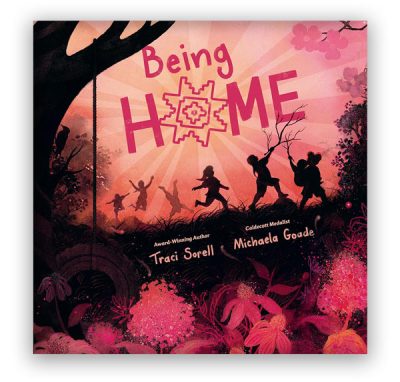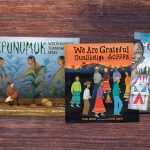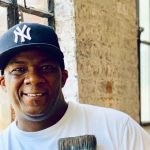Photo credit by Sydney Akagi.
As the winner of the 2021 Caldecott Medal for We Are Water Protectors (written by Carole Lindstrom, Roaring Brook, 2020), Michaela Goade became the first Indigenous person and BIPOC woman to receive the award—an accomplishment made even more noteworthy when she went on to receive a Caldecott Honor in 2023 for Berry Song (Little, Brown, 2022). But given the spotlight Goade shines on relationships, kinship—and what she calls our “connections to the land and water and to the web that connects us all”—it’s not surprising that she seems to take even more joy in being part of something bigger than herself and her books. As Goade says, “I get to be part of a growing canon of powerful Native children’s literature.”
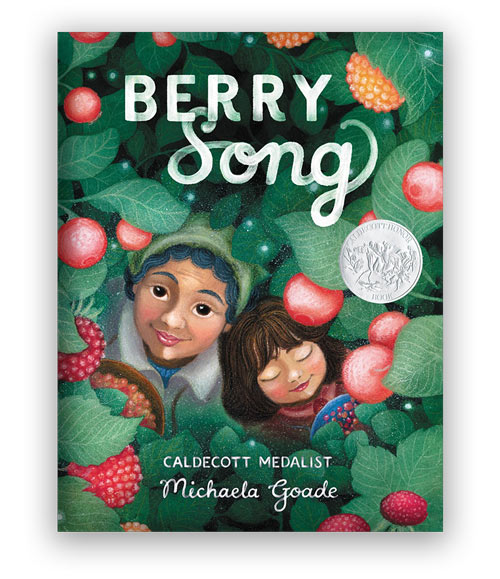
Here Goade talks with Lisa Bullard about the inspiration she continues to draw from the place, people, and creatures of her Alaskan childhood; her delight in centering Native children in her books; and her message to students on how revision can inform their creativity.
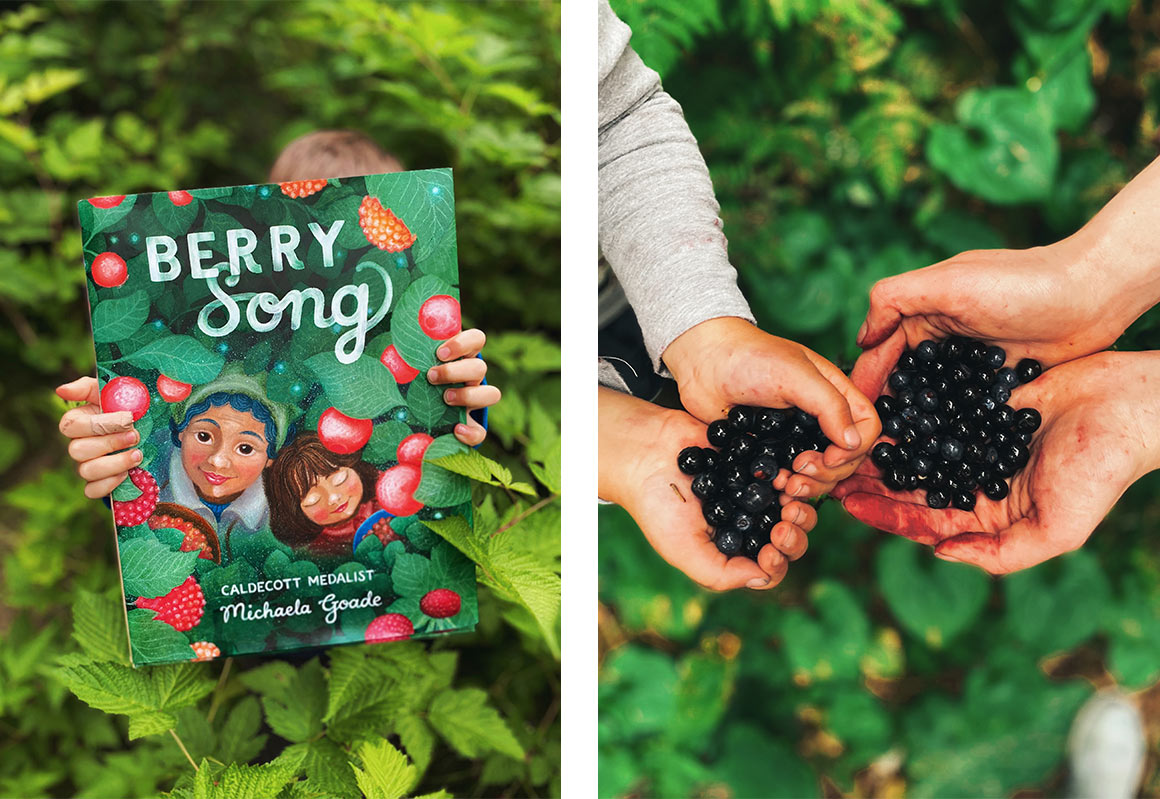
Berry Song was your debut as both author and illustrator. In the story, a young girl forages with her grandmother for the gifts that Earth has to offer—and the berries they find help shape their song of thanks. Is the story based on your own experiences?
My childhood was spent on the beaches and in the rainforest of Southeast Alaska—or Lingít Aaní as we call it in the Tlingit language. Many of my earliest memories involve the land—exploring tidepools at low tide, hunting for fishing lures that got stuck on beach rocks with my sister, kayaking near humpback whales with my mom, running wild with friends through the forests playing capture the flag, watching a family of killer whales swim underneath our little boat, learning how to fillet a salmon from my dad, and yes, of course, there are memories of berry picking! I chose to set Berry Song here on Lingít Aaní, and I was able to weave in elements of both my childhood and my present. Before Berry Song, I hadn’t worked on a book set in this region for a few years, so it felt like a lovely homecoming.
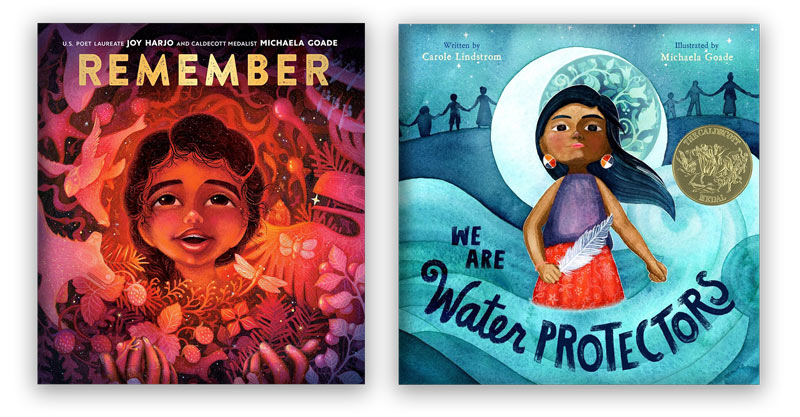
How did your childhood experiences inform your illustrations for books such as Remember (written by Joy Harjo, Random House, 2023) and We Are Water Protectors?
When I work on books written by authors belonging to other Native Nations and set in different parts of the world, I still find inspiration in my early experiences and connection to place. I take the love, gratitude, and attachment that I feel toward Lingít Aaní and translate it to different settings and characters. I focus on emotion and ask myself what things felt like as a child and try to use that to find doorways into other authors’ stories.
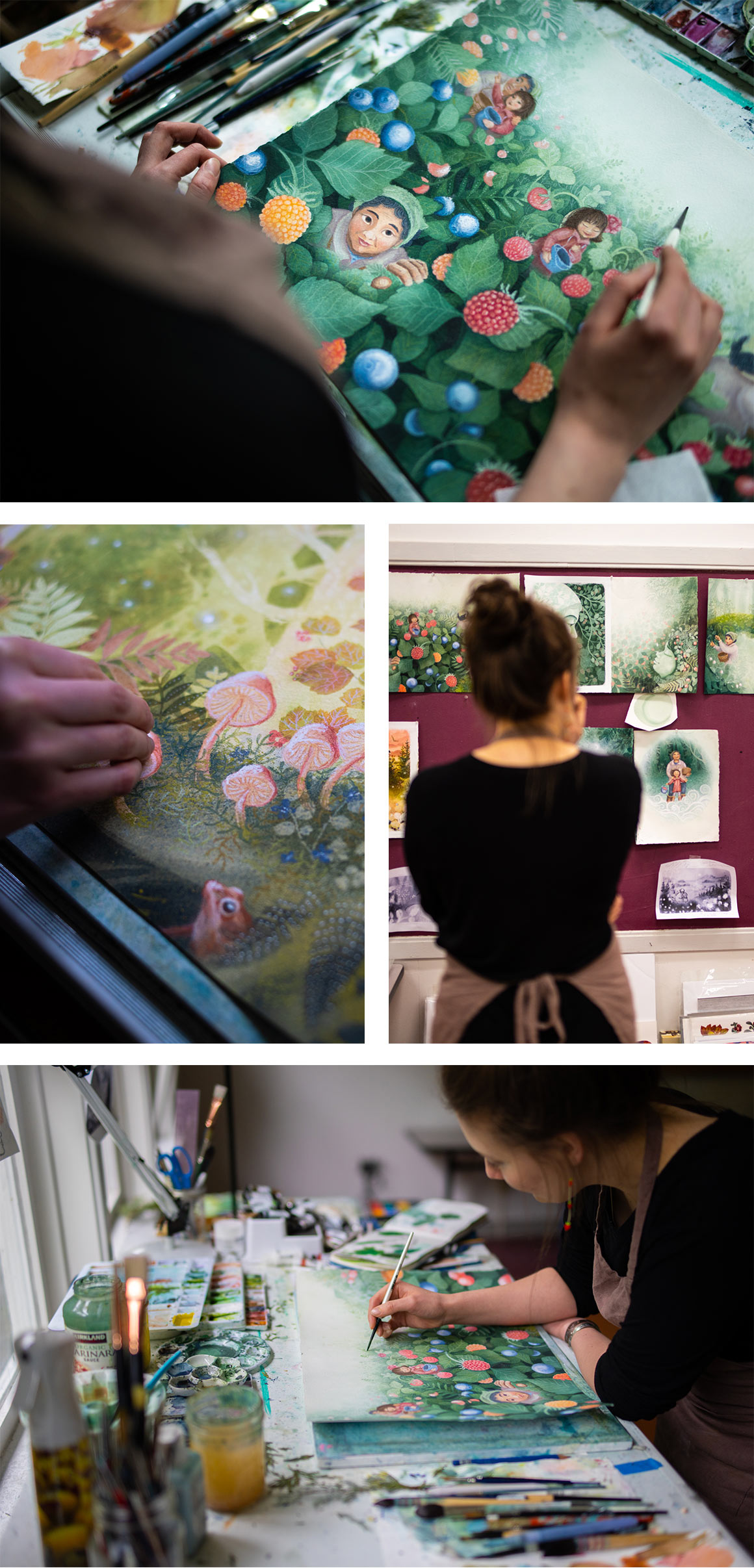
What’s your favorite part of creating books for young people?
Creating books for young people as a career is still mind-boggling to me. I’m incredibly grateful for this work. It’s very fulfilling and healing, as I get to be part of a growing canon of powerful Native children’s literature. These types of books weren’t around when I was a kid, so centering and celebrating Native children through story and art is a gift and responsibility I cherish. All children deserve to see themselves honored and affirmed on the page. And from a purely creative standpoint, I absolutely love that I get to frolic through dreams, memories, art, and magic—and call it work!
Centering and celebrating Native children through story and art is a gift and responsibility I cherish. All children deserve to see themselves honored and affirmed on the page.”
Berry Song highlights the strong connections people have to wild places. Do you have a favorite place to share with young readers?
I’m grateful to live in a beautiful and wild part of the world. I don’t think I could pick just one favorite spot! Most of Southeast Alaska is quite isolated and only accessible by plane or boat. When you live in a remote area such as this, where things like the seasons, animal migrations, tides, and weather affect nearly every facet of life, it’s easy to remember how connected everything is. For a practical example, when the weekly barge doesn’t make it in because of weather or other shipping delays, the grocery store shelves start to look bare. This in turn helps you understand the importance of food harvesting activities like fishing, hunting, and berry picking and the role they can play in food security. The health of the land and its abundance takes on greater significance.
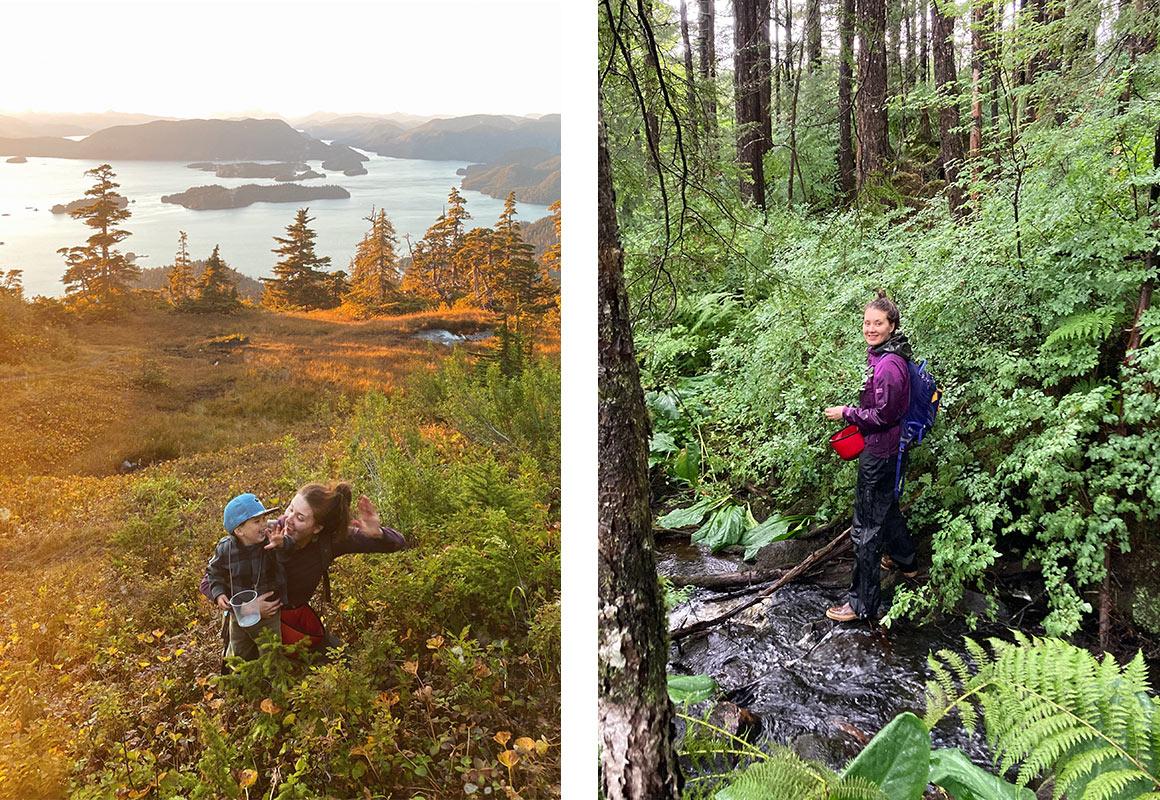
Do you have suggestions for how young people can connect to nature wherever they live?
In my work, I usually focus on the emotional and spiritual connections to the land and water and to the web that connects us all. You don’t have to live in the country or a remote part of Alaska to understand or appreciate these connections! Finding connection and grounding to place can be as simple as recognizing the gift of water as it flows through the pipes in your building and learning where the water comes from. It can be prioritizing time in parks, looking for community gardens, or nurturing your own plants. It could look like learning the name of the Native Nation whose traditional lands you now call home (https://native-land.ca/), researching more about their past and present and looking for ways to get involved.
Finding connection and grounding to place can be as simple as recognizing the gift of water as it flows through the pipes in your building and learning where the water comes from.”
Berry Song is also a powerful celebration of the important role played by tradition. Do you have advice that might help students give voice to their own family/community traditions?
I like to tell students to follow their curiosities and find what lights them up. The first draft of Berry Song was completely different from how it ended up—I don’t think a single sentence from that early version made it into the final manuscript! It wasn’t until I decided to center the text around berry picking that the story began to find its footing. I needed to anchor it around something I truly cared about. For me, I’m currently learning to lean into stories and art in a more personal way, whether that’s exploring my memories or looking into our family history. I search for little sparks of excitement and see where those ideas take me. My hope is that it helps me find more authentic and universal stories.
How do your own community traditions inspire your work?
When it comes to community, I find inspiration in so many different facets of life. I might find it in the beauty of a group of dancing clan sisters or other fleeting moments. It could look like traditional food-harvesting activities and their meaning and history. I might look to present-day issues that our Tribe is facing and find ways to draw attention to them. Whatever the source of inspiration, it’s important to be respectful and honor protocol. I’m always learning and trying to uplift Native cultures while hopefully never overstepping.
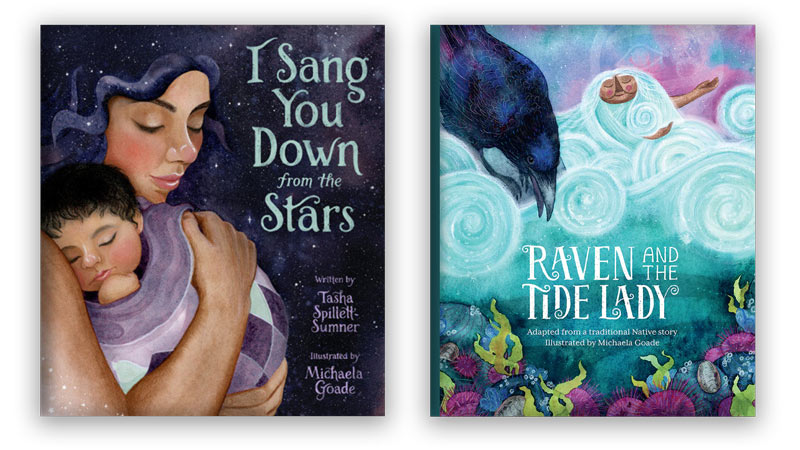
Could you compare/contrast how it differs when you illustrate another writer’s words as opposed to both writing and illustrating the book yourself?
I should start with a little disclaimer—I still feel more like an illustrator who sometimes writes. The title of “author” is still fairly new to me! That being said, I love bouncing between illustrator and author-illustrator. It feels like the approach and process train different creative muscles.
As an author-illustrator, the creative process feels more like jumping down a rabbit hole. It’s very exciting and fulfilling because you get to dream and build to your heart’s content! However, all that freedom can be a little daunting (talk about fear of the blank page!), and it can be hard to know when to stop tinkering.
As an illustrator working with another writer’s words, it sometimes feels more like creative detective work. My goal is to find the visual narrative that is hidden somewhere in the author’s words. In some books, the inspiration flows easily while in others, I need to fail many times before a particular world begins to take shape. There are constraints to work within and push against, which can be frustrating at times but also call for greater creativity. At the end of the journey, the final book is a true alchemy of author and illustrator. We come away from the process with a book that neither of us could have ever created on our own, which is something I’ve come to really love and appreciate.
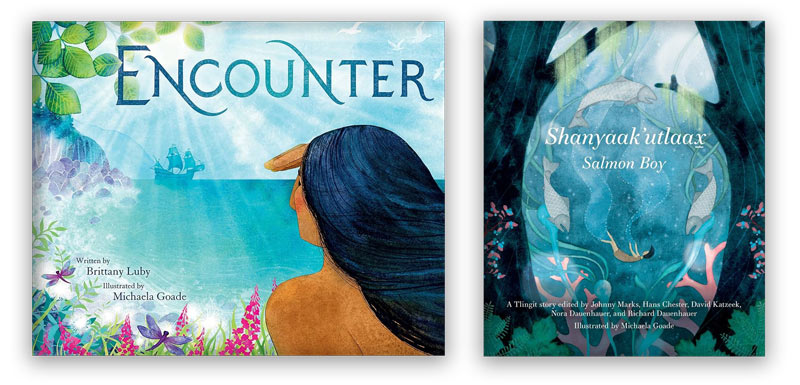
What suggestions do you have for students who are collaborating on a project?
I’d say that trust and respect for your creative partner are very important. I’m grateful to have worked with authors who have trusted me fully and welcomed me into their story with open arms. They recognize that I will bring my own perspective and add layers of meaning to their story. And as the illustrator, I always strive to honor the author and their culture. I also think it’s important to be sympathetic to their vision.
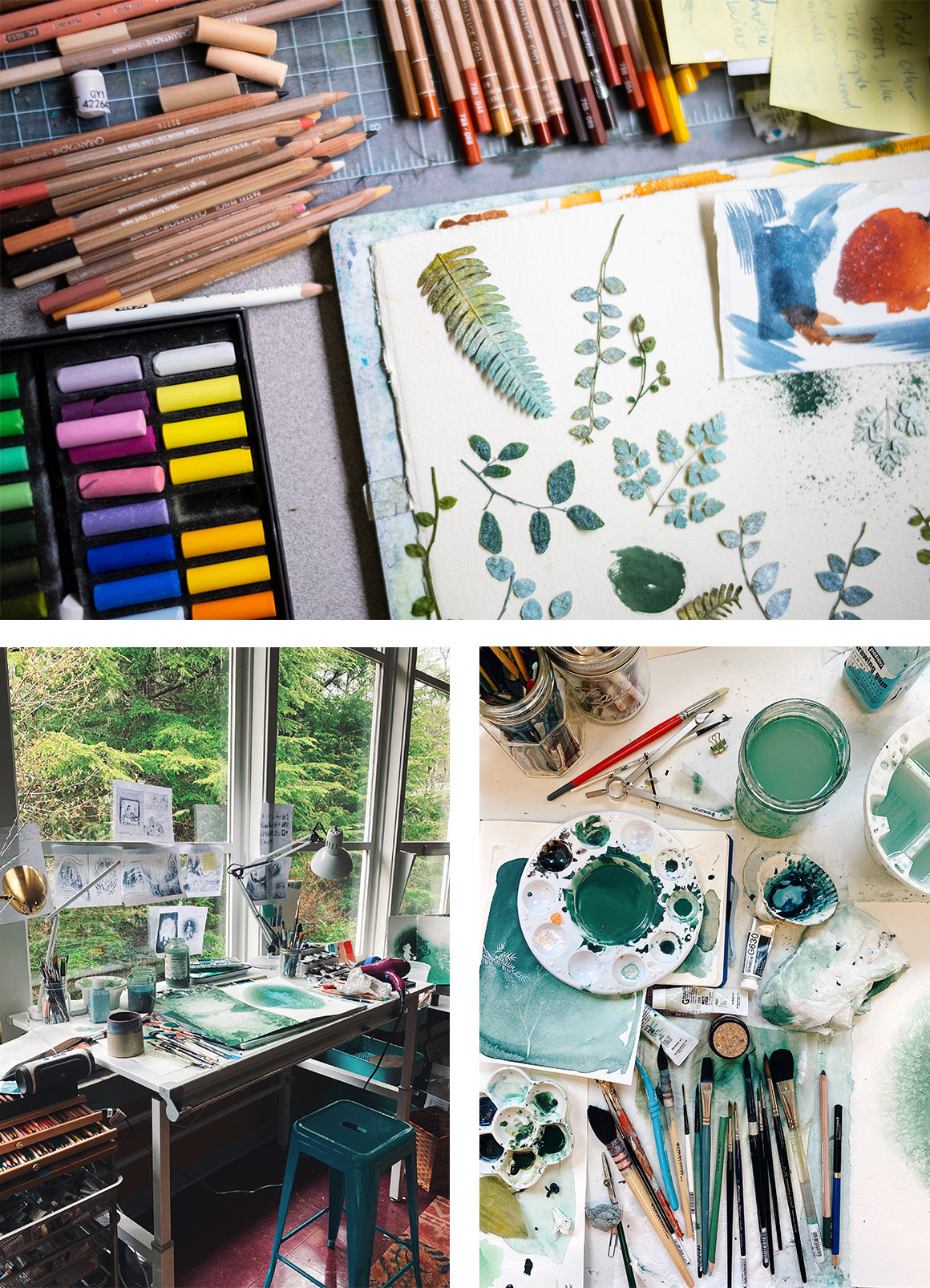
What’s your best advice for young readers who want to pursue a creative activity?
Keep drawing, painting, writing—whatever sings to you! You won’t be in love with everything you create, and that’s okay. Young readers don’t get to see the endless story drafts on my computer, the many, many sketches that never made the cut, or the tall stack of paintings that I had to restart because I made one too many mistakes. Mistakes and failures are all part of the process. In fact, they can be your biggest teachers! And don’t worry about rejection. It will happen, but you don’t have to let it stop you.
Mistakes and failures are all part of the process. In fact, they can be your biggest teachers!”
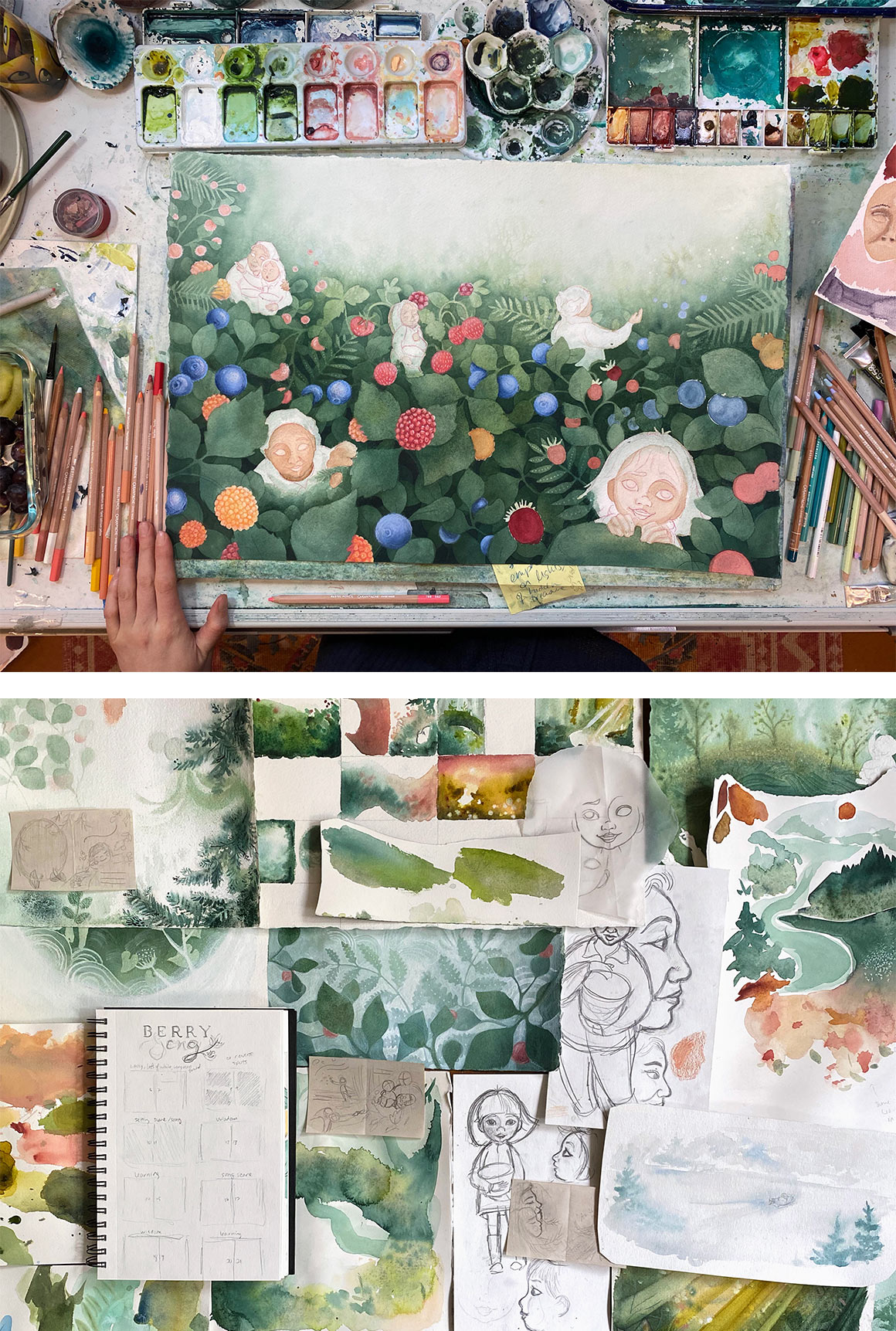
Students often resist the need to revise their work. But the intricacies and nuances of your illustrations make it clear that you revisit your pieces many times. Can you talk about the role revision plays in your creative process?
Revisions are where the magic happens! I love the iterative process because that’s when you get to really dig into the creative process. In doing so, you’ll often unearth new layers of meaning, sometimes surprising yourself! It often feels like I need to go through all the ways in which something doesn’t work, to find out how it does.
For instance, when it comes to illustration, my early sketches are very loose and in grayscale. Once those are approved, and I’m given the greenlight to paint, I revisit each sketch and figure out all the little details before I start painting. As I begin to think in color, new ideas will often pop up as well. Add in a few good painting mishaps and restarts, where I learn such things as which colors won’t mix well here, or which technique isn’t going to work there, and you have yourself a constant refining process!
I sympathize with students. I know how it can feel to have to “do it all over again.” It can be quite challenging to delete bits of your story, to erase things off the page, to redo things entirely. But if you can remember that the result will be stronger, more authentic art, it can also be fun and freeing!
Revisions are where the magic happens!”
What would you like to tell fans about your forthcoming books?
My next book is a collaboration with author Traci Sorell called Being Home, and it’s set to publish May 2024 with Kokila Books. Currently, I’m working on building out the world of Berry Song into a “Song of the Seasons” series. I’m working on the winter book, and I’m very excited about where it’s taking me!
What are the best ways for educators and librarians to follow you on social media?
I’m most active on Instagram @michaelagoade, so I would say please find me there!
